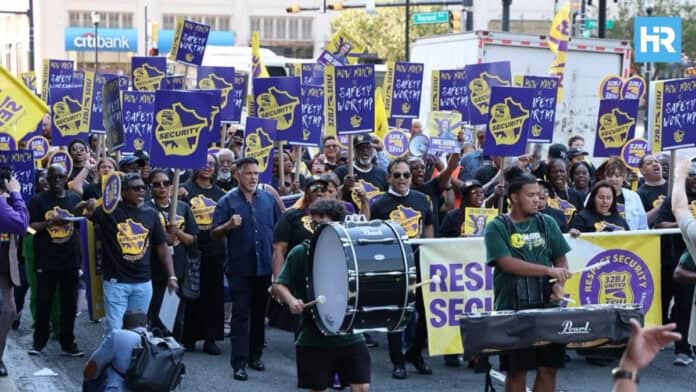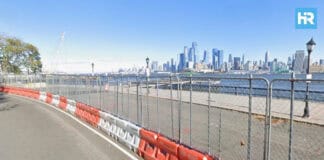Despite various reports, the New York Knicks did not make a formal contract offer to three-time All-Star Ben Simmons. SNY’s Ian Begley, referencing league sources, reported that while the Knicks communicated with Simmons’ representatives, they ultimately chose not to extend a deal.
This clarification from Begley followed comments from veteran NBA reporter Marc Stein, who stated in his newsletter that Simmons had “passed on” a one-year veteran minimum offer from New York. However, Begley pointed out that although there was genuine interest from the Knicks in the former Rookie of the Year, no official offer ever materialized.
On September 8, 2025, Begley shared an update, posting, “Knicks have had dialogue with free agent Ben Simmons over the course of the offseason and certainly have had interest in him, but club has never made a formal offer to Simmons, per league sources. Landry Shamet, Malcolm Brogdon among those on NYK radar for its lone roster spot.”
Knicks have had dialogue with free agent Ben Simmons over the course of the offseason and certainly have had interest in him, but club has never made a formal offer to Simmons, per league sources. Landry Shamet, Malcolm Brogdon among those on NYK radar for its lone roster spot
— Ian Begley (@IanBegley) September 8, 2025
- According to Ian Begley, the Knicks never formally offered Ben Simmons a contract, despite earlier reports that he had declined a veteran minimum deal.
- New York has $3.7 million in cap space below the second-apron threshold, with one roster spot available.
- The Knicks have shown interest in Malcolm Brogdon and Landry Shamet as possible signings.
- Simmons’ career remains in limbo at age 29, following a season of career-low stats with the Clippers, a split with agent Bernie Lee, and public consideration of retirement.
Knicks’ Interest and Other Targets
Simmons was viewed as a potential bench addition for his size and playmaking, but the Knicks instead strengthened their second unit this offseason by bringing in veteran forward Guerschon Yabusele and former Sixth Man of the Year Jordan Clarkson.
Marc Stein noted that both New York and the Boston Celtics expressed the “most serious interest” in Simmons this summer. The Celtics later filled their roster need by signing Chris Boucher, formerly of Toronto.
Stein also revealed that Simmons recently parted ways with his agent, Bernie Lee—who also represents Jimmy Butler of the Golden State Warriors—casting further doubt on Simmons’ future in the league.
With one roster spot remaining before the season begins, the Knicks are still linked to other options, including Landry Shamet, who played for the team last season, and Malcolm Brogdon.
Cap Room and Financial Flexibility
New York’s payroll sits $3.7 million below the league’s second-apron threshold after signing Yabusele with the taxpayer midlevel exception. This gives the Knicks room to add one more player on a veteran minimum contract as well as a rookie deal for a second-round draft pick.
Although Bleacher Report salary cap expert Eric Pincus has suggested Simmons could still end up with the Knicks, Begley’s reporting makes clear that no formal agreement has been made.
Betting Market Outlook for Knicks
While speculation about Simmons’ future continued, sportsbooks adjusted their odds on New York’s upcoming season. As of September 2025, the Knicks are consistently listed among the league’s top contenders.
DraftKings currently prices New York at +900 to win the 2025–26 NBA title, FanDuel lists them at +950, and Caesars/ESPN BET shows them shorter at +800. In the Eastern Conference market, Action Network puts the Knicks at +290, just behind Cleveland at +260, while OddsShark identifies a “best bet” at +310 for New York to win the East.
Season win totals showed strong expectations. Action Network previously noted a line of 52.5 wins with a projection of 53.3, while BetMGM lists the total at 53.5 (-110 on both sides).
Individual awards markets have included Knicks guard Jalen Brunson. His MVP odds vary widely, from +3500 at some books to as long as +8000 elsewhere, underscoring both his growing role and market uncertainty.
The Knicks’ futures prices have seen modest movement since the summer. ESPN reported on June 22 that New York opened at +750, ranking behind Oklahoma City and Cleveland. VegasInsider tracked the Knicks tightening from +950 to +900 to +800 in early July before settling back into the current +900 to +950 range across most books.
Simmons’ Decline Since His Peak
The 28-year-old Simmons entered the NBA as the No. 1 overall pick in 2016 and appeared to be on a fast track to superstardom. He made three consecutive All-Star teams, won Rookie of the Year in 2018, and was twice selected to the NBA All-Defensive First Team while with the Philadelphia 76ers.
But his career has been derailed by injuries and mental health struggles since his high-profile exit from Philadelphia. With the Brooklyn Nets, Simmons battled back issues that kept him sidelined for long stretches. He averaged 6.2 points, 5.2 rebounds, and 6.9 assists across 33 games last season before reaching a buyout agreement.
The Los Angeles Clippers then signed Simmons to a pro-rated one-year, $1.08 million contract to finish out the 2024–25 season. He played just 17 games, averaging career lows of 2.9 points, 3.8 rebounds, and 3.1 assists while struggling to establish a role. His playoff role with the Clippers was minimal, logging just eight minutes per game during their brief postseason run.
Clippers Move On, Simmons Weighs His Career
This offseason, the Clippers reshaped their roster by adding Chris Paul, Bradley Beal, and center Brook Lopez, closing the door on Simmons’ return to Los Angeles. Stein reported that Simmons had entered the summer hoping to secure a deal above the veteran minimum, but as training camp approaches, his options appear limited.
Stefan Bondy of the New York Post reported that Simmons is weighing whether to continue his professional career at all. Bondy wrote, “The former All-Star and Rookie of the Year, who has struggled recently with injuries and handling the public pressures of the league, is an option for the Knicks because of his upside as an elite defender and athlete to fill their backup point guard spot. However, Simmons … is sending a message that he isn’t sure if he wants to continue.”
At 29, Simmons now finds himself unsigned and weighing retirement. His former agent Bernie Lee officially stepped away from representing him this summer, notifying the NBPA of the change.
















